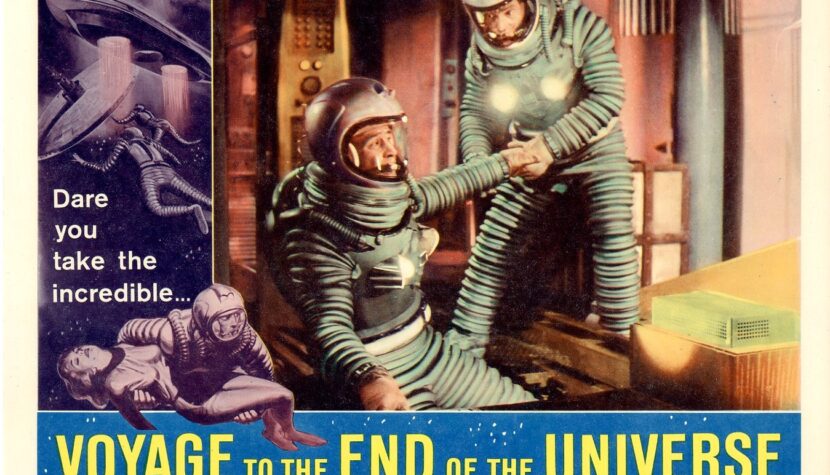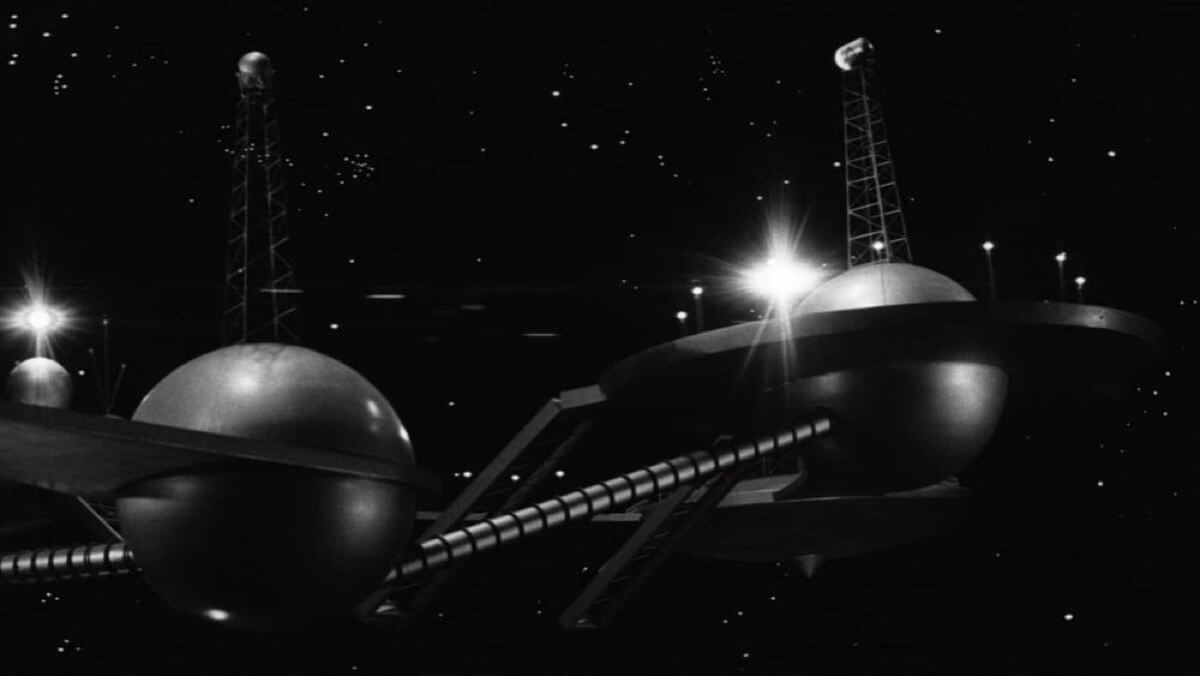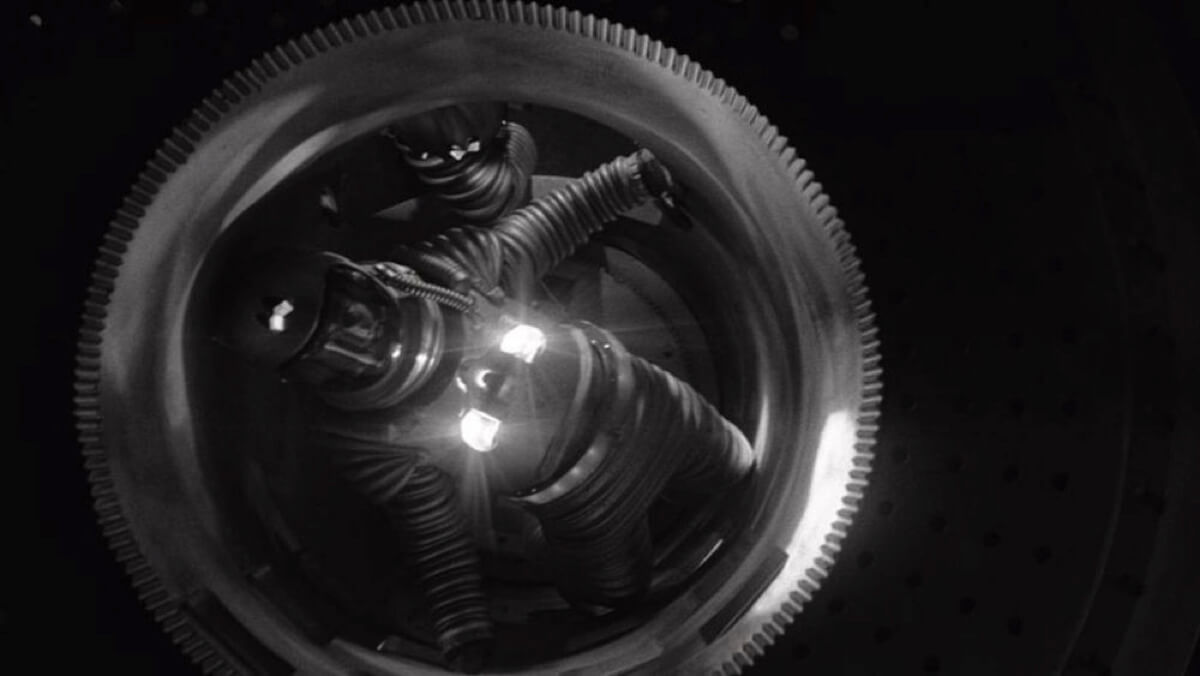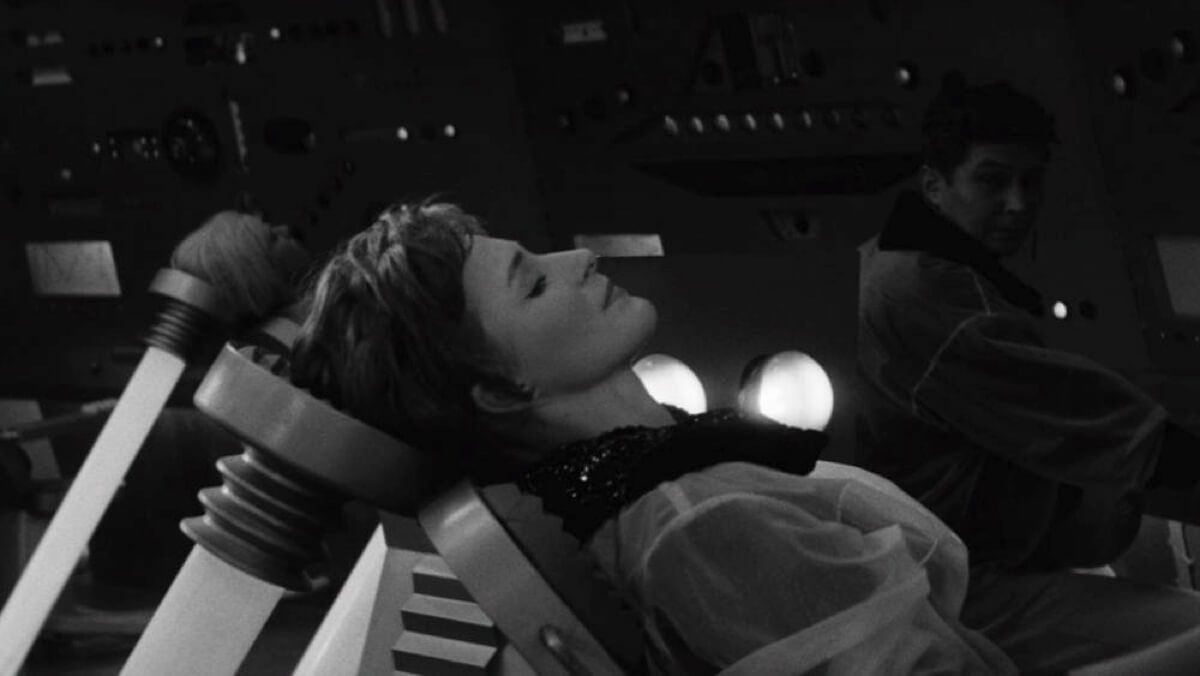VOYAGE TO THE END OF THE UNIVERSE. 2163: Space Odyssey

Ikarie is heading towards Alpha Centauri—the star closest to Earth—and the crew’s goal is to explore the planets of that star system in search of intelligent extraterrestrial life forms. During the 15-year journey (two Earth years), the crew of Ikaria encounters, at first, the wreck of a battle station transporting poisonous gas and nuclear weapons, and later, a mysterious Black Star emitting dangerous radiation. Unexplained phenomena begin to occur on the ship.
Ikarie XB-1 or Voyage To The End Of The Universe was inspired by The Magellanic Cloud, one of Stanislaw Lem’s early novels—although this information is nowhere to be found in the film’s opening or closing credits. The author himself considered The Magellanic Cloud to be “a rather weak work, especially due to its language layer,” and additionally having “an excessively sweetened plot,” which amounted to “an extract of socialist realism” (to this day, it’s one of the few long-out-of-print books in Lem’s extensive bibliography).

Jerzy Jarzębski expressed a similar sentiment: “The book’s style is a rather strange blend of language from future science and an overly poetic style.” Therefore, it is all the more surprising that Ikaria-XB-1, a kind of unofficial adaptation, turned out to be remarkably successful.

First and foremost, Ikarie XB-1 / Voyage To The End Of The Universe has nothing to do with the cheesy sci-fi churned out en masse in the 1950s and 1960s, mainly in the United States (but also in Japan). It is a surprisingly mature and balanced portrayal of human dramas barely articulated by the debris of science fiction kitsch. Instead of rubber monsters, we have ordinary people who struggle not only with unforeseen events but also with everyday routine. As Andrzej Kołodyński noted in his book The Legacy of Imagination: The History of SF Cinema:
Perhaps for the first time in SF cinema, people are washing themselves, organizing parties, and pondering how to spend their free time. […] Technology takes a back seat, and the most important thing is man.

Also remarkable is the way Ikarie XB-1 / Voyage To The End Of The Universe was realized. Despite a limited budget and the imperfections of practical special effects, the Czechoslovak production looks no worse than many American films from the same period—and yet filmmakers on this side of the Iron Curtain had much more modest means.

Nevertheless, stylish interiors and costumes were taken care of, the Black Star was meticulously designed, and even a robot was built, owing much to Robby from Forbidden Planet (1956) by Fred Wilcox. Ikarie XB-1 / Voyage To The End Of The Universe also proved to be influential: Stanley Kubrick had to watch Polák‘s film before making 2001: A Space Odyssey (1968). The similarities are too significant to be considered coincidental.

